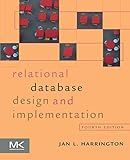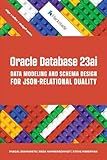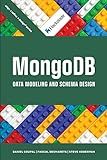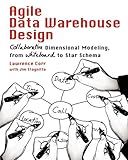Best Database Schema Guides to Buy in December 2025

Star Schema The Complete Reference



Relational Database Design and Implementation: Clearly Explained



Designing Data-Intensive Applications: The Big Ideas Behind Reliable, Scalable, and Maintainable Systems



Usage-Driven Database Design: From Logical Data Modeling through Physical Schema Definition



Oracle Database 23ai Data Modeling and Schema Design for JSON-Relational Duality



MongoDB Data Modeling and Schema Design



The Unified Star Schema: An Agile and Resilient Approach to Data Warehouse and Analytics Design



Agile Data Warehouse Design: Collaborative Dimensional Modeling, from Whiteboard to Star Schema



OCA Oracle Database SQL Exam Guide (Exam 1Z0-071) (Oracle Press)


Schema in Oracle is defined as a logical collection of database objects such as tables, views, indexes, sequences, stored procedures, and other user-defined objects. It is created and owned by a specific user, and all objects within the schema are associated with that user. The schema provides a way to organize and manage database objects, as well as control access permissions and security settings for those objects. Each user in an Oracle database typically has their own schema, which acts as a container for their objects and data. The schema name is typically the same as the username in Oracle.
How is data integrity maintained within a schema in Oracle?
Data integrity within a schema in Oracle is maintained through the use of constraints, triggers, and foreign key relationships.
- Constraints: Constraints are rules that are defined on a table to enforce data integrity. There are several types of constraints in Oracle, including NOT NULL, UNIQUE, PRIMARY KEY, and FOREIGN KEY constraints. These constraints help ensure that data entered into a table meets certain criteria and is consistent with the schema design.
- Triggers: Triggers are special procedures that are automatically executed in response to certain events, such as inserting, updating, or deleting data in a table. Triggers can be used to enforce additional data integrity rules that cannot be expressed through constraints alone.
- Foreign key relationships: Foreign key relationships are used to enforce referential integrity between tables. By defining foreign key constraints on columns that reference primary keys in other tables, Oracle ensures that any data entered into the foreign key column must also exist in the referenced table, maintaining data integrity across related tables.
Overall, a combination of constraints, triggers, and foreign key relationships helps to maintain data integrity within a schema in Oracle, ensuring that data is accurate, consistent, and valid.
How is data security enforced at the schema level in Oracle?
Data security in Oracle can be enforced at the schema level through various mechanisms, such as:
- Data Encryption: Oracle provides the ability to encrypt sensitive data at the column-level using Transparent Data Encryption (TDE). This ensures that data is secure both in transit and at rest.
- Access Control: Oracle allows administrators to grant or revoke privileges at the schema level, controlling who has access to specific tables, views, or procedures within a schema.
- Virtual Private Database (VPD): VPD enables administrators to create security policies that dynamically control data access based on the user executing a query and the specific conditions defined in the policy.
- Audit Trail: Oracle enables administrators to set up audit policies to track and monitor user activity within a schema, identifying any unauthorized access or changes to data.
- Data Masking: Oracle provides the ability to mask sensitive data in non-production environments, ensuring that developers and testers do not have access to confidential information.
Overall, Oracle offers a robust set of security features at the schema level to protect sensitive data and prevent unauthorized access or breaches.
How can you drop a schema in Oracle?
To drop a schema in Oracle, you need to follow these steps:
- Connect to your Oracle database using a user account that has the necessary privileges to drop schemas.
- Execute the following SQL statement to drop the schema: DROP USER schema_name CASCADE; Replace schema_name with the name of the schema you want to drop. The CASCADE option ensures that all objects owned by the schema are also dropped.
- Confirm the action by entering COMMIT; to save changes.
- Finally, disconnect from the database or switch to another user account to complete the process.
Please note that dropping a schema cannot be undone, so make sure to back up any important data before proceeding. Additionally, ensure that you have the necessary permissions to drop schemas before executing the SQL statement.
What is the significance of schema caching in Oracle Real Application Clusters?
In Oracle Real Application Clusters (RAC), schema caching is a feature that helps improve database performance by reducing the amount of overhead associated with accessing and validating schema information. By caching schema information in memory, RAC nodes can quickly access and validate the structure of database objects, such as tables, views, and indexes, without having to repeatedly query the data dictionary.
The significance of schema caching in Oracle RAC includes:
- Improved performance: By caching schema information in memory, RAC nodes can quickly validate database objects, reducing the amount of time needed to access and query schema information. This can lead to improved performance for applications running on the RAC cluster.
- Reduced overhead: Schema caching helps reduce the overhead associated with accessing and validating schema information, as nodes can quickly retrieve the necessary information from memory rather than querying the data dictionary. This can help prevent bottlenecks and improve overall system scalability.
- Enhanced scalability: With schema caching, RAC clusters can more efficiently handle large volumes of data and user connections, as the caching mechanism helps reduce the amount of resources needed to access and validate schema information. This can result in improved scalability and performance for applications running on the RAC cluster.
Overall, schema caching in Oracle RAC is a critical feature that can help improve performance, reduce overhead, and enhance scalability for applications running on a RAC cluster. By caching schema information in memory, RAC nodes can quickly access and validate the structure of database objects, leading to improved performance and efficiency for database operations.
What are the components of a schema in Oracle?
- Tables: Tables contain the actual data in the database and are organized in rows and columns.
- Views: Views are virtual tables that are created based on a query. They do not store any actual data but provide a way to simplify complex queries or restrict access to certain data.
- Indexes: Indexes are used to improve the performance of queries by speeding up data retrieval. They provide a fast way to locate data in a table.
- Sequences: Sequences are used to generate unique numbers in a database. They are often used to generate primary key values for tables.
- Synonyms: Synonyms are alternative names for database objects, such as tables, views, procedures, and sequences. They can provide a way to simplify access to objects or hide the underlying structure of the database.
- Procedures and functions: Procedures and functions are stored programs that can be executed in the database. They can perform complex operations and calculations that can be reused in multiple queries or applications.
- Triggers: Triggers are special types of stored programs that are automatically executed when certain events occur in the database, such as inserting, updating, or deleting data from a table.
- Packages: Packages are collections of related procedures, functions, and other elements that are stored together in the database. They provide a way to organize and manage complex code logic.
- Constraints: Constraints are rules that are enforced on the data in a database to ensure its integrity and consistency. They can include rules about data types, uniqueness, foreign keys, and more.
What is the impact of dropping a schema on dependent objects in Oracle?
Dropping a schema in Oracle can have a significant impact on dependent objects within the database.
- Loss of data: If the dependent objects contain important data, dropping the schema can result in the loss of this data. It is important to ensure that any critical data is backed up or moved to another schema before dropping the schema.
- Invalidation of objects: Dropping a schema can cause dependent objects such as views, procedures, functions, triggers, etc., to become invalid. This can lead to issues with applications that rely on these objects, as they will need to be recompiled or recreated.
- Referential integrity constraints: If there are referential integrity constraints between tables in the dropped schema and tables in other schemas, these constraints will be broken when the schema is dropped. This can lead to data integrity issues and potentially corrupt data.
- Performance impact: Dropping a schema can have a performance impact on the database, as Oracle will need to recompile dependent objects and recreate any necessary indexes or constraints. This can result in increased CPU and memory usage during the process.
- Application downtime: Dropping a schema can require downtime for applications that rely on the schema and its dependent objects. It is important to plan for this downtime and communicate with stakeholders to minimize any disruptions.
In conclusion, dropping a schema in Oracle can have significant impacts on dependent objects within the database. It is important to carefully plan and consider the consequences before proceeding with dropping a schema to avoid any negative impacts on data integrity, performance, and application availability.
